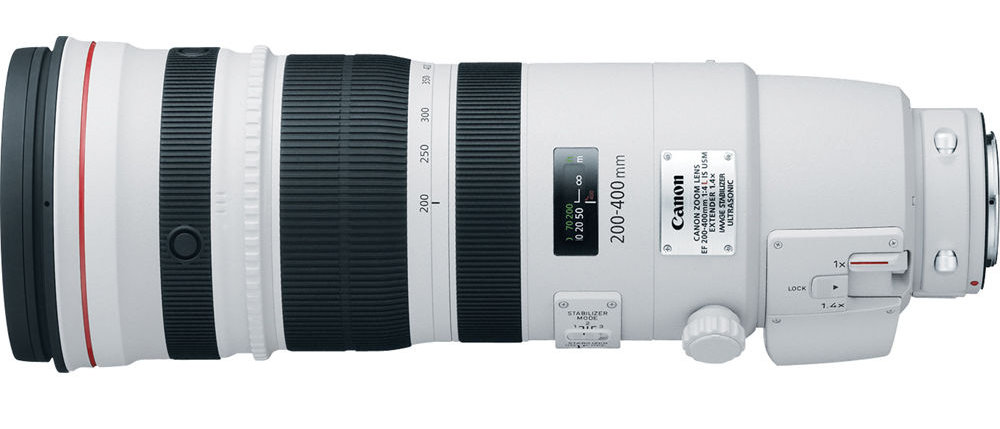Digital Camera World Verdict
If you can see further than the eye-watering price tag, this lens is a real heavyweight in terms of performance as well as physical construction. It has a 200-400mm zoom range in standard trim with a built-in 1.4x tele-converter or ‘extender’, boosting maximum reach to 560mm. It’s a force to be reckoned with for action, sports and wildlife photography.
Pros
- +
Great image quality
- +
Super-fast autofocus
- +
Tough build quality
Cons
- -
Hugely expensive
- -
Big and heavy
Why you can trust Digital Camera World
The Canon EF 200-400mm f/4L IS USM Extender 1.4x is a real whopper. It’s nearly twice as long as the Canon EF 100-400mm f/4.5-5.6L IS II USM and two full kilograms heavier, weighing in at 3,620g. Its main claim to fame is that it has a built in ‘extender’ or tele-converter, which you can bring into play via a simple lever at the rear. It’s massively quicker and easier than removing the lens from the camera body, attaching an extender and then refitting it.
Specifications
Mount: Canon EF
Full frame: Yes
Autofocus: Yes
Image stabilization: Yes
Lens construction: 24-33 elements in 20-24 groups
Angle of view: 12-4.5 degrees
Diaphragm blades: 9
Minimum aperture: f/32-45
Minimum focusing distance: 2.0m
Maximum magnification ratio: 0.15-0.21x
Filter size: 52mm (drop-in)
Dimensions: 128x366mm
Weight: 3,620g
Key features

Although the f/4 aperture rating is pretty fast for a super-telephoto lens, and remains constant throughout the native aperture range, it naturally shrinks to f/5.6 when you engage the built-in 1.4x extender. Even so, that’s still wider than in competing Sigma 150-600mm f/5-6.3 DG OS HSM | S and Tamron 150-600mm super-tele zooms, as well as the Canon RF 100-500mm F4.5-7.1 L IS USM, at the long end of their zoom ranges. The maximum focal length stretches to 560mm, or an ‘effective’ 896mm on an APS-C format body.
Although it looks pretty colossal, the lens’s internal zoom mechanism is usual in super-tele zooms. Most physically extend to about 350mm at their longest zoom setting, which makes the 366mm length of this lens seem more reasonable.
As well as featuring a triple-mode image stabilizer, weather-seals and fluorine coatings, the lens adds AF-hold and focus preset buttons. The latter enables you to instantly return to a preset focus distance setting. There’s also a ‘power focus’ mode for smooth transitions when shooting movies.
Performance
There’s always some sacrifice in image quality when adding an extender but, in this case, it’s fairly minimal. Performance is excellent throughout the extended zoom range, although sharpness does drop off a little. Super-fast autofocus is well able to keep pace with the action for sports and wildlife shooting, while the optical image stabilizer is very effective for handheld shooting or when using a monopod.
Lab results
We run a range of lab tests under controlled conditions, using the Imatest Master testing suite. Photos of test charts are taken across the range of apertures and zooms (where available), then analyzed for sharpness, distortion and chromatic aberrations.
We use Imatest SFR (spatial frequency response) charts and analysis software to plot lens resolution at the center of the image frame, corners and mid-point distances, across the range of aperture settings and, with zoom lenses, at four different focal lengths. The tests also measure distortion and color fringing (chromatic aberration).
Sharpness:
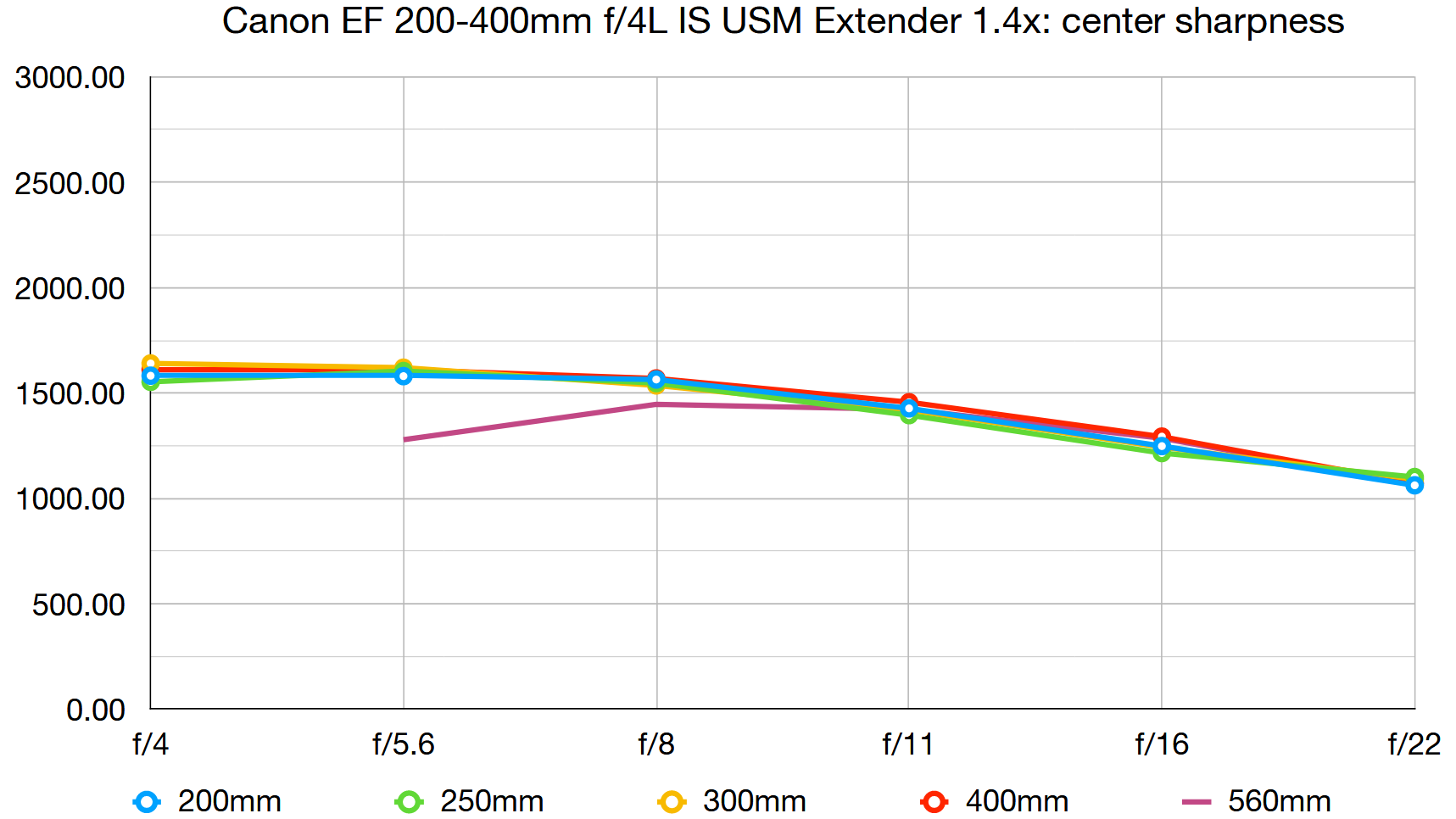
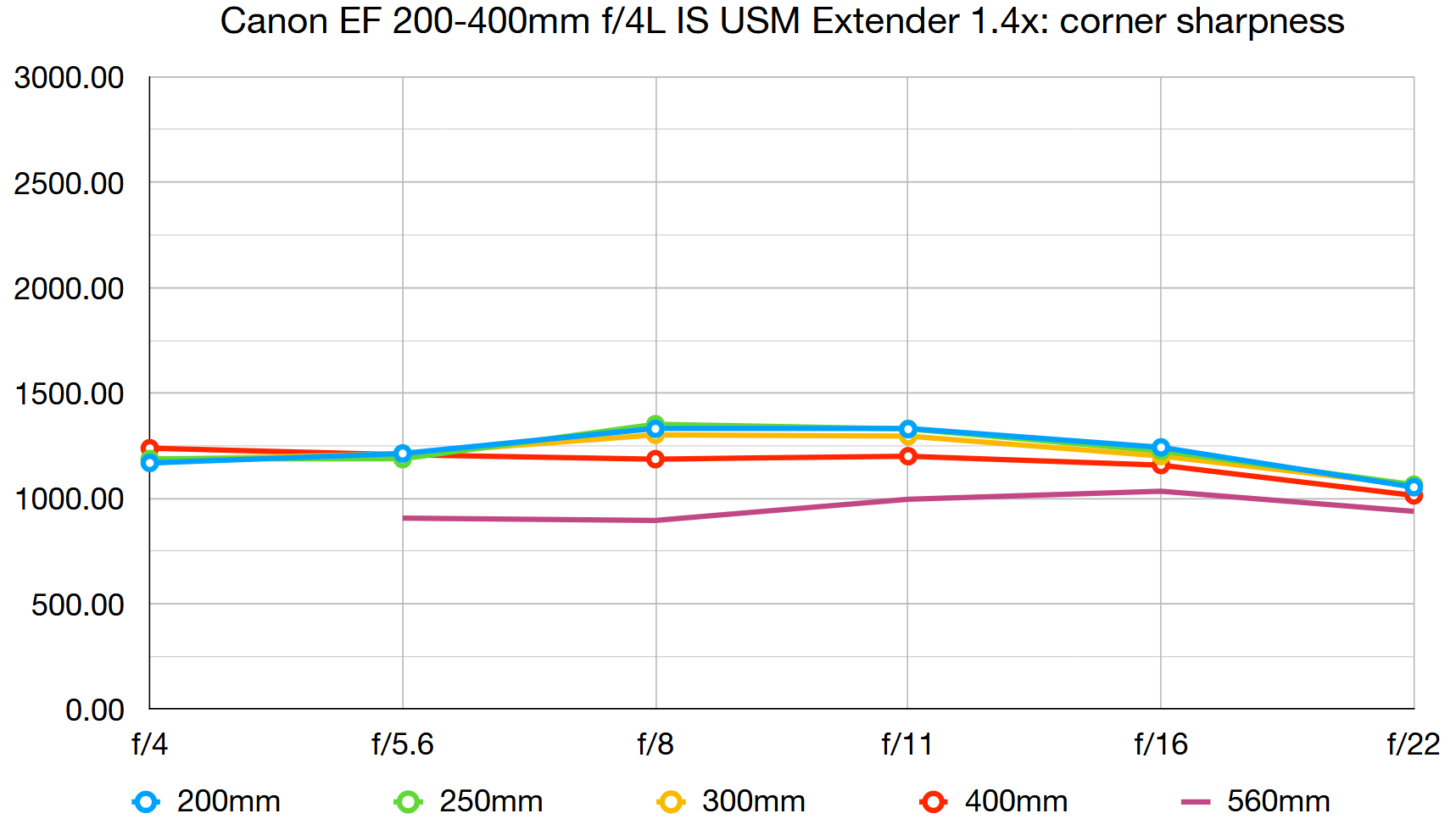
Results for sharpness from our lab tests look pretty mediocre, based on shooting test charts at close-range. However, in real-world action, sports and wildlife photography, the lens is capable of super-sharp results.
Fringing:
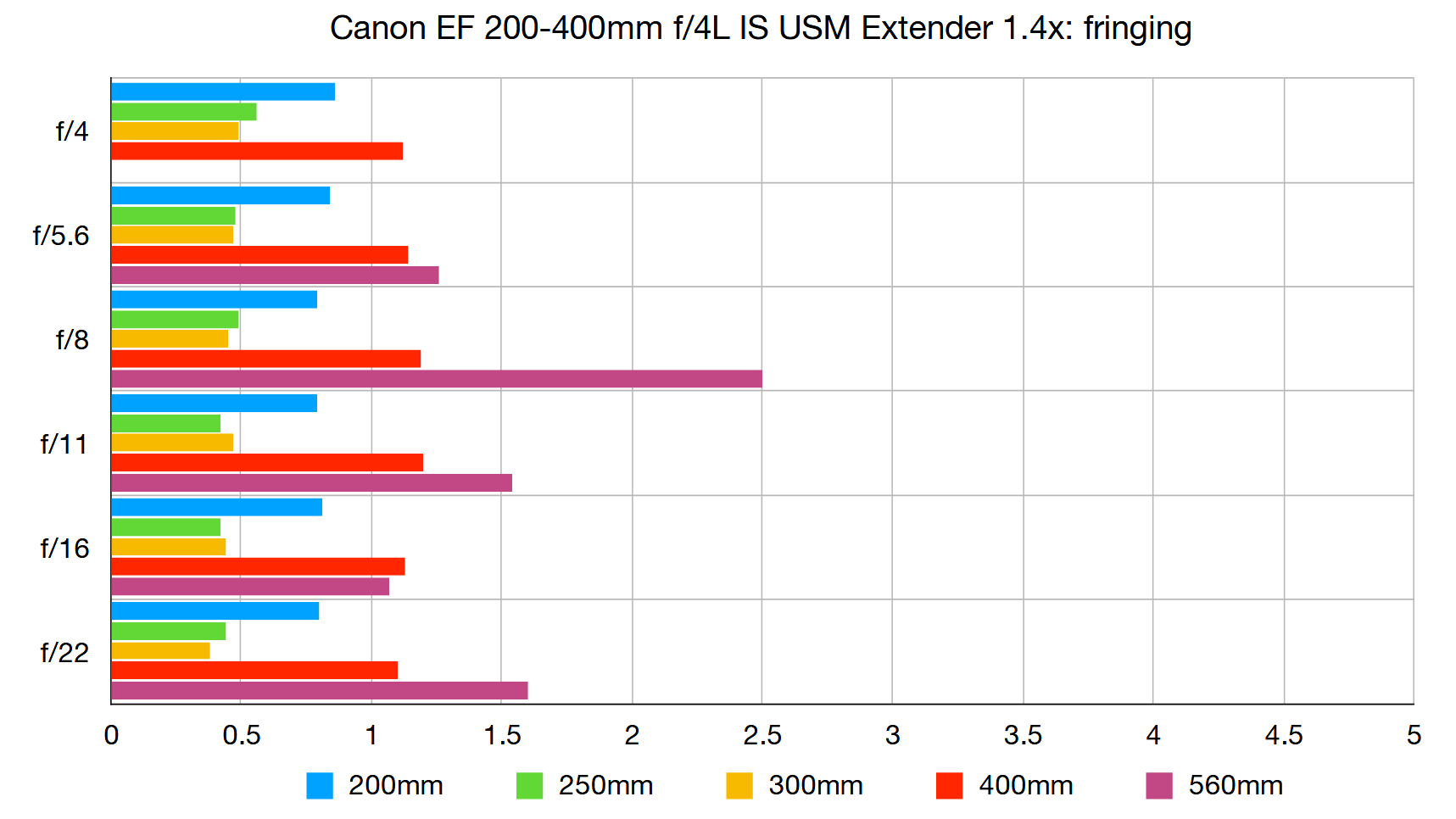
Control over color fringing is very good indeed in the native zoom range and remains impressive when engaging the built-in 1.4x extender.
Distortion:
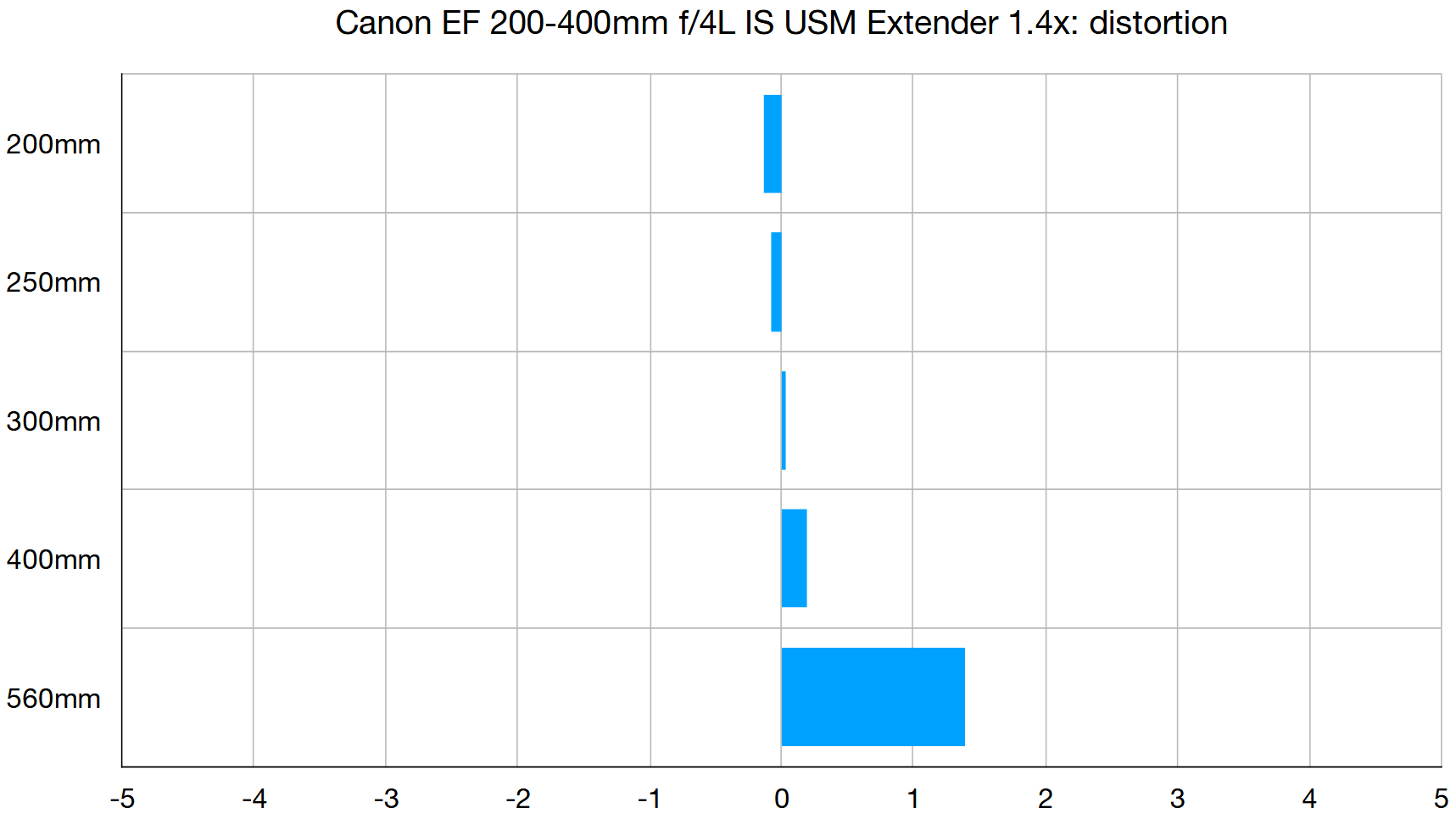
There’s virtually no distortion at the short end of the zoom range and only minimal pincushion distortion at the long end, with or without the extender.
Verdict
The mighty Canon was quite a coup when launched back in 2013 and remains a mighty super-tele zoom. It has epic build quality and delivers very impressive performance, but nowadays it struggles to justify its price tag against newer competition, which give similar maximum reach without the need for an extender, at a much more affordable price.
Read more:
Matthew Richards is a photographer and journalist who has spent years using and reviewing all manner of photo gear. He is Digital Camera World's principal lens reviewer – and has tested more primes and zooms than most people have had hot dinners!
His expertise with equipment doesn’t end there, though. He is also an encyclopedia when it comes to all manner of cameras, camera holsters and bags, flashguns, tripods and heads, printers, papers and inks, and just about anything imaging-related.
In an earlier life he was a broadcast engineer at the BBC, as well as a former editor of PC Guide.
